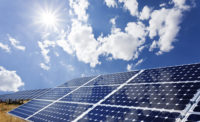Study projects future of dairy industry for next 50 years
Dairy production will shift to areas with more sustainable water supplies and adequate growing seasons in response to changes in climate.

In the future, global food production systems will come under increased pressure from population growth, urbanization and climate change, according to a new review published in the Journal of Dairy Science. Over the last two years, scientists from the United States, the United Kingdom and Sweden examined projections and current data to identify ways in which the dairy industry may respond to industry challenges. This study projects how dairy producers will meet challenges and take advantage of opportunities in 2067 and beyond.
Global population is expected to increase from 7.6 to 10.5 billion people by 2067, while arable land per capita will decrease by 25%. Because population growth will be uneven, disparity in arable land per capita is also expected to increase. With increased population density comes increased urbanization, which leads to greater personal income and greater demand for dairy products. It is also expected that climate change will force changes in the location of dairy production. In the Northern Hemisphere, where 86% of the world’s milk is produced, the effects of climate change are less tempered by oceanic effects. Dairy production will shift to areas with more sustainable water supplies and adequate growing seasons in response to changes in climate.
“Dairy farmers in 2067 will meet the world’s needs for essential nutrients by adopting technologies and practices that provide improved cow health and longevity, profitable dairy farms and sustainable agriculture,” says Jack Britt, professor and associate dean emeritus for North Carolina State University, Raleigh, N.C.
The authors forecast that dairy farmers will adopt ways of managing the microbiomes of cows' digestive systems and other body systems to improve health and well-being. They also believe that there will be more attention to managing a cow's epigenome, which mediates longer-term responses to the environment.
The dairy industry will increase production and safety through consolidation, modernization and specialization. Global trade will be an important factor influencing profitability, and larger dairy farms will continue to make greater use of automation to reduce costs. Improvements in genetic selection will lead to dairy cattle lines that are healthier, produce milk more efficiently and are more disease- and heat-resistant. The authors also expect a shift from simply exporting surpluses to producing value-added products tailored to specific tastes and customs.
“The world faces a challenge in feeding its expanding population during the next 50 years, and we forecast that dairying will meet this challenge by exploiting knowledge and technology to develop better dairy cows and more productive and sustainable dairy farms,” according to Britt. “Our vision is that dairying in the future will reflect sustainable intensification that benefits animals, agroecosystems and humankind through production of key nutrients for human consumption.”
Looking for a reprint of this article?
From high-res PDFs to custom plaques, order your copy today!






